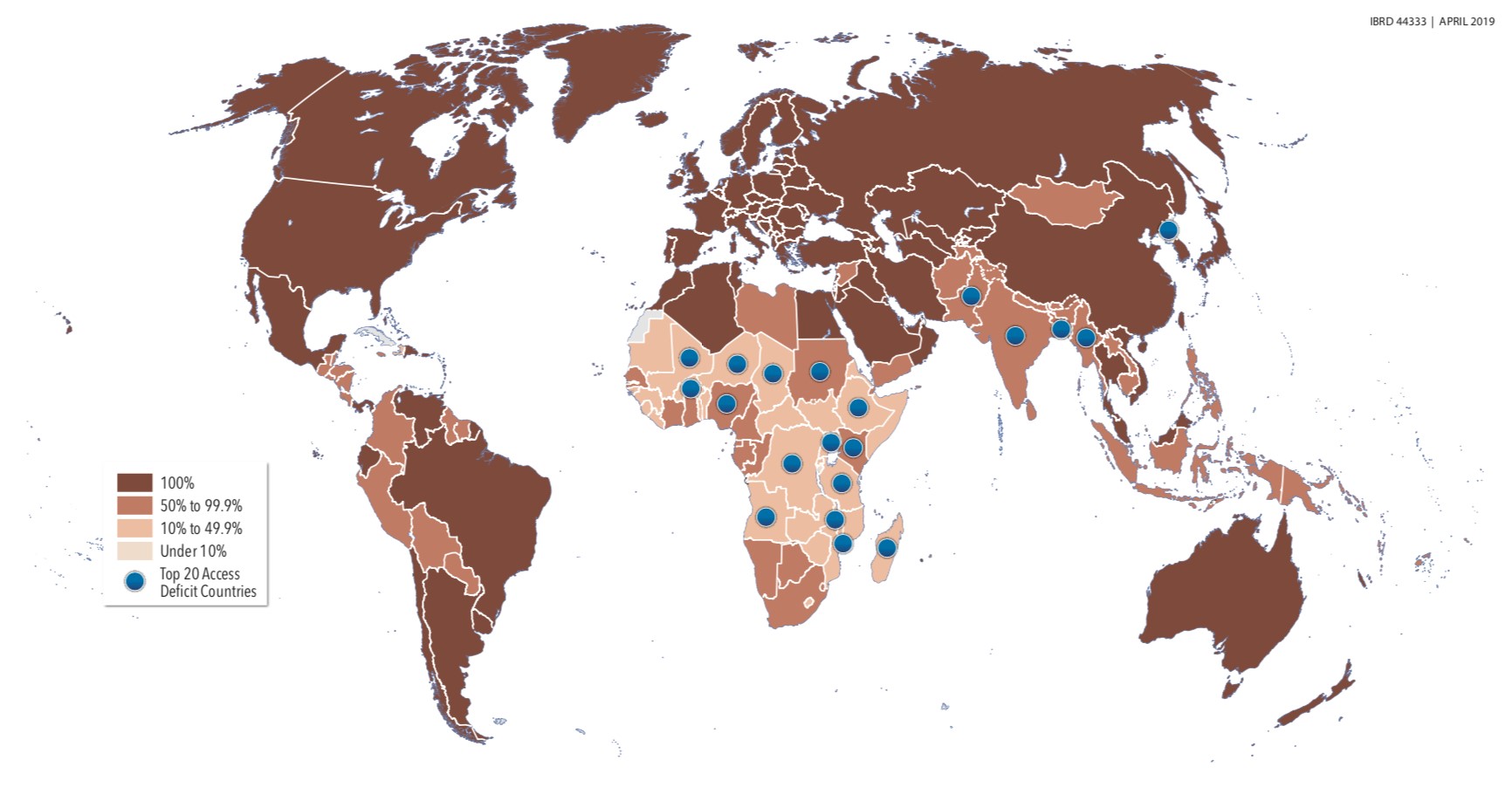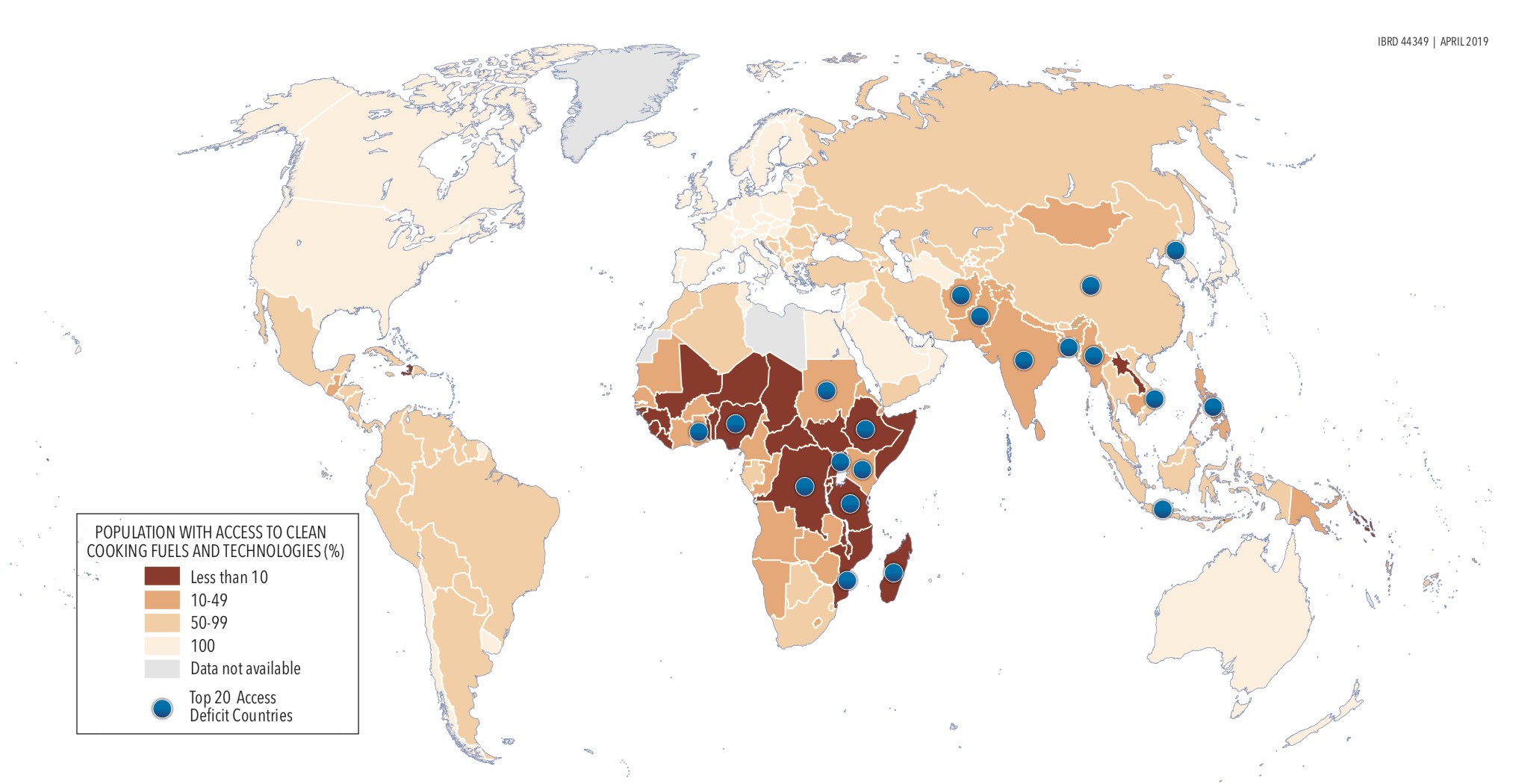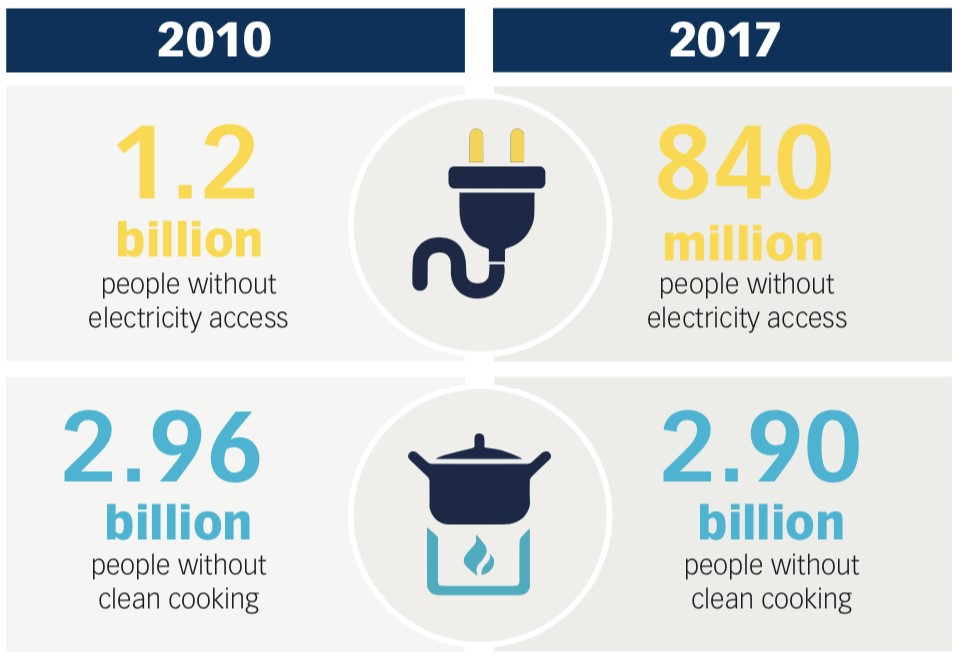
2019. 840milioni di persone non hanno alcun accesso all’energia
By Rosa González – CFO and BDM Audax Renovables
Energy always available, at any time or context: few would question this statement. For us, inserting a plug into the socket, pressing a switch, turning the gas knob are nothing more than daily and automatic gestures to which no particular meaning is given. It is no coincidence that most of our days begin with a light turning on and one turning off. We are used to it and don't feel surprised when the light bulb lights up the room, the smartphone charges or the water heats up. We take it for granted that energy is there, always at our disposal; rather we are surprised - and irritated - by the opposite, and that is if it doesn't happen: blackouts, particularly if of a certain magnitude, never cease to cause concern and make headlines.
But what is normal for us is not normal for 840 million people in the world, that is, for those who currently have no access to forms of modern, continuous and safe energy.
The negative repercussions of a life without energy both on the existence of individuals and on that of nations are multiple, serious and concern all areas: healthcare, educational, economic, social. It is energy - as the discovery and use of more efficient, available and abundant energy sources - that has led to the great revolutions in the history of humanity. From the discovery of fire onwards.
This is what emerges fromEnergy Progress Report 2019, the study promoted by the International Energy Agency-IEA, the International Renewable Energy Agency-IRENA, the United Nations statistics division (UNSD), the World Bank and the World Health Organization-WHO, which annually photograph the situation of so-called "energy access" in world. This is objective number 7 of the 17 established by the United Nations; the Sustainable Development Goals (SDGs) o Sustainable Development Goals have a time horizon of 2030.
But how is the situation today, 2019? The data in the report highlights how there has been an improvement in recent years, with a significant decrease in the number of people without electricity: from 1.2 billion in 2000, to one billion in 2010, up to 840 million today.
This positive trend has led to a growth in the global electrification rate up to 89%, from 83% in 2010. A visible result in certain areas of Latin America, the Caribbean or Southeast Asia which in recent times were bad or underserved and today boast percentages around 98%. Lower but still important is the goal achieved by the nations of Central and South Asia, with the 91%. Nations such as India, Bangladesh and Myanmar have especially benefited from these progress.
However, excluded from this progress is – Kenya aside – sub-Saharan Africa. There are approximately 573 million Africans who live in the territories beneath the great desert who are still "in the dark", without any type of access to electricity and therefore in a highly penalizing condition. In this vast area of the African continent are the 20 countries with the lowest percentage of population with access to electricity, with Burundi, Chad, Malawi, the Democratic Republic of Congo and Niger bringing up the rear.
Another element of differentiation concerns cities and countryside. If in the former almost all of the population has access to electricity (97%), it is in the latter that there are the greatest problems with a percentage that is around 79%.
In ogni caso, al di là dei miglioramenti registrati è necessario continuare a fare progressi. E non solo per quegli 840milioni di individui che – come si dice – sono ancora off grid, ma anche per coloro che hanno avuto l’opportunità di collegarsi alla rete. Per costoro infatti l’approvvigionamento di energia elettrica ha caratteristiche ben diverse da quelle che sperimentiamo quotidianamente e cioè sicura – ma soprattutto – continua e sostenibile dal punto di vista economico. Nel 2017, un terzo dei Paesi con problemi di accesso all’energia ha dovuto affrontare più di un’interruzione settimanale di elettricità della durata di oltre quattro minuti. Inoltre, nella metà di queste nazioni, considerando un livello base del consumo di elettricità pari a 30 kilowattora al mese, il prezzo da pagare per la fornitura è risultato insostenibile per ben il 40% delle famiglie.
Graph 1. Share of population with access to electricity

(source: World Bank)
Another aspect of this energy poverty is represented by the lack of access to a safe and healthy food cooking system. Kerosene, biomass (especially wood), coal: today there are around 3 billion people who use fuels that are harmful to both health and the environment for cooking - but this also applies to heating and lighting environments. It happens especially in the regions of sub-Saharan Africa and Southeast Asia, with India and China leading the way in terms of population shares excluded from modern cooking systems or "clean cooking" (25% and 20% respectively). Looking at the African continent, fewer than 5% of the inhabitants of nations such as the Democratic Republic of Congo, Ethiopia, Madagascar, Mozambique, Uganda and Tanzania have the opportunity to use clean energy when preparing meals.
The implications and negative impacts are multiple and concern primarily health: breathing smoke and vapors generated by biomass or fossil fuels on a daily basis, perhaps produced in poorly ventilated environments, is a high risk factor for the onset of various serious pathologies ; in this regard there are more exposed categories such as women and children, more frequently at home than men.
Furthermore, the use of open flames in unsafe premises is dangerous due to the possible occurrence of fires or serious domestic accidents. As if that were not enough, the lack of access to efficient and modern systems brings with it further elements capable of lowering the quality of life of many of these people, such as the fatigue deriving from the daily search and transport of materials to burn, which whether lumber or other.
To finish with the negative consequences that such behavior has on the environment: primarily deforestation and air pollution.
Graph 2. Share of population with access to clean fuels and technologies

(source: WHO)
What awaits us in the coming decades? Projections to 2030 show a further - but unfortunately not decisive - improvement, with over 650 million people still off-grid and without access to energy; of them, 9 out of 10, will live on the African continent, in the sub-Saharan regions.
A similar argument can be made for the issue of "clean cooking": an advance that is not decisive for solving the problem. The IEA estimate for 2030 is that 2.2 billion people will still be tied to the use of polluting and harmful fuels.

Source: IEA, IRENA, World Bank, WHO, UNSD 2019
Today, projects of varying size and penetration, carried out by private and public bodies - more or less large - have the aim of bringing energy where there is none. Technological innovation helps, especially for those remote and rural areas where the grid is unlikely to reach: solar energy devices and mini-grids are essential to "remove entire communities from the darkness", improve the quality of life and stimulate economic-social growth .
In the long term, however, the best solution is to be found in the development of an energy system that favors the use of clean and renewable sources. This is the challenge to be won.





